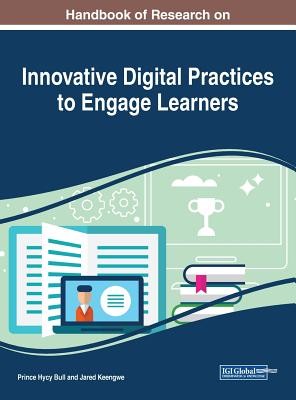
- We will send in 10–14 business days.
- Publisher: Information Science Reference
- ISBN-10: 1522594388
- ISBN-13: 9781522594383
- Format: 21.6 x 27.9 x 2.7 cm, hardcover
- Language: English
- SAVE -10% with code: EXTRA
Handbook of Research on Innovative Digital Practices to Engage Learners (e-book) (used book) | bookbook.eu
Reviews
Description
Digital integration is the driving force of teaching and learning at all levels of education. As more non-traditional students seek credentialing, certification, and degrees, institutions continue to push the boundaries of innovative practices to meet the needs of diverse students. Programs and faculty have moved from merely using technology and learning management systems to unique and innovative ways to engage learners. The Handbook of Research on Innovative Digital Practices to Engage Learners is an essential scholarly publication that offers theoretical frameworks, delivery models, current guidelines, and digital design techniques for integrating technological advancements in education contexts to enforce student engagement and positive student outcomes. Featuring a wide range of topics such as gamification, wearable technologies, and distance education, this book is ideal for teachers, curriculum developers, instructional designers, principals, deans, administrators, researchers, academicians, education professionals, and students.
EXTRA 10 % discount with code: EXTRA
The promotion ends in 14d.19:12:07
The discount code is valid when purchasing from 10 €. Discounts do not stack.
- Publisher: Information Science Reference
- ISBN-10: 1522594388
- ISBN-13: 9781522594383
- Format: 21.6 x 27.9 x 2.7 cm, hardcover
- Language: English English
Digital integration is the driving force of teaching and learning at all levels of education. As more non-traditional students seek credentialing, certification, and degrees, institutions continue to push the boundaries of innovative practices to meet the needs of diverse students. Programs and faculty have moved from merely using technology and learning management systems to unique and innovative ways to engage learners. The Handbook of Research on Innovative Digital Practices to Engage Learners is an essential scholarly publication that offers theoretical frameworks, delivery models, current guidelines, and digital design techniques for integrating technological advancements in education contexts to enforce student engagement and positive student outcomes. Featuring a wide range of topics such as gamification, wearable technologies, and distance education, this book is ideal for teachers, curriculum developers, instructional designers, principals, deans, administrators, researchers, academicians, education professionals, and students.


Reviews